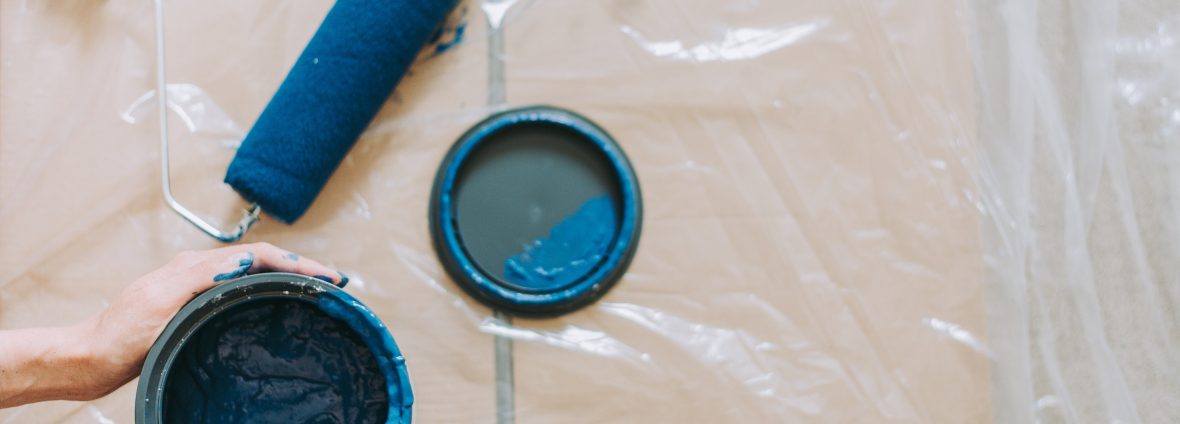When you choose Ultrex, you know you are selecting the best material for windows and doors.
October 26, 2018FRONT DOORS: THE EASY SOLUTION FOR UPGRADING YOUR HOME
December 19, 2018THE SIMPLE GUIDE TO PAINTING YOUR HOUSE LIKE A PRO

Have you been wanting to repaint the interior of your home this winter but don’t know how to get started? Here at GR Mitchell, we want your DIY painting project to be as simple as possible so you can enjoy the experience and the outcome. With that in mind, we came up with some easy steps to take your DIY spirit to the next level.
Selecting a paint color can seem harder than it really is. To make this easier, we recommend choosing different hues of the same color, applying a layer of paint of each shade to the wall, and letting it dry overnight. By doing this, you will be able to see how the different colors look in various light throughout the day since some colors change with natural and artificial light.
Before you start painting, we suggest cleaning the walls and covering the floor. Use a broom or duster to wipe down the walls and the baseboards. If there is an excessive amount of dust in a particular area, feel free to use a vacuum or a damp rag for wiping down the trim, especially if you did any sanding to remove rough spots or chipped paint. Cleaning is essential because you are getting rid of particles that could get stuck in the paint. When covering the floor, consider using plastic sheeting as well as a drop cloth. By using these materials, you can ensure no splatter or seeping onto the floor.
To make sharp, straight lines between walls and trim, we recommend taping. This method also helps ensure that you don’t accidentally paint the wrong part of the wall. When using painters’ tape, you should outline around the baseboards, windows, doors, and entryways. Alternatively, if you are experienced with the “cutting in” approach, you can practice this as well. We don’t suggest this method unless you are comfortable in your ability to perform this properly.
Priming the wall is an important step, especially if you have a darker color that you are covering up with a lighter one. Primer is a specific type of paint that goes on before the finishing paint. There are several types of primer for different surfaces, so make sure to get the kind that works with your particular walls. After applying the primer, wait for it to fully dry before moving on to the next step.
Now you are ready to apply the finishing paint color. Most paint is applied easily, so there is no need to put too much pressure on the roller. Start from the ceiling and work your way down. This way, if you drip or make any mistakes, you will be going over those spots as you work your way down the wall. Once you have covered an area, be sure to let it dry before applying the second coat of paint. If you go back over it while it is still wet, you might end up leaving marks and streaks of color on the wall.
Selecting a paint color can seem harder than it really is. To make this easier, we recommend choosing different hues of the same color, applying a layer of paint of each shade to the wall, and letting it dry overnight. By doing this, you will be able to see how the different colors look in various light throughout the day since some colors change with natural and artificial light.
Before you start painting, we suggest cleaning the walls and covering the floor. Use a broom or duster to wipe down the walls and the baseboards. If there is an excessive amount of dust in a particular area, feel free to use a vacuum or a damp rag for wiping down the trim, especially if you did any sanding to remove rough spots or chipped paint. Cleaning is essential because you are getting rid of particles that could get stuck in the paint. When covering the floor, consider using plastic sheeting as well as a drop cloth. By using these materials, you can ensure no splatter or seeping onto the floor.
To make sharp, straight lines between walls and trim, we recommend taping. This method also helps ensure that you don’t accidentally paint the wrong part of the wall. When using painters’ tape, you should outline around the baseboards, windows, doors, and entryways. Alternatively, if you are experienced with the “cutting in” approach, you can practice this as well. We don’t suggest this method unless you are comfortable in your ability to perform this properly.
Priming the wall is an important step, especially if you have a darker color that you are covering up with a lighter one. Primer is a specific type of paint that goes on before the finishing paint. There are several types of primer for different surfaces, so make sure to get the kind that works with your particular walls. After applying the primer, wait for it to fully dry before moving on to the next step.
Now you are ready to apply the finishing paint color. Most paint is applied easily, so there is no need to put too much pressure on the roller. Start from the ceiling and work your way down. This way, if you drip or make any mistakes, you will be going over those spots as you work your way down the wall. Once you have covered an area, be sure to let it dry before applying the second coat of paint. If you go back over it while it is still wet, you might end up leaving marks and streaks of color on the wall.
We love helping people when it comes to any home improvement projects, and painting is no different. Our trusted team is happy to help answer any questions or walk you through our extensive inventory of paint and supplies to get you started on your home project. Contact us, give us a call at 717-464-2999, or explore our new paint center at our Willow Street, PA store today.

